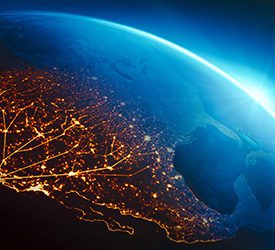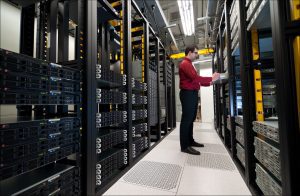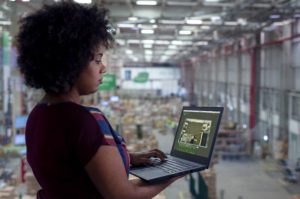It’s no secret that data centers use a tremendous amount of energy, about 2% of all U.S. electricity by some estimates. It’s great that companies with some of the largest data centers, such as Apple, are trying to address the issue with technologies such as solar fields to power some data centers. But the fact remains that most cloud service providers and certainly most enterprise customers don’t have the resources to build on-site renewable energy sources or complex geothermal systems.
That means we have to look in other directions to achieve sustainability in data center with respect to energy. As I recently wrote in a guest column for Forbes magazine, it’s my contention that we can cut emissions 30% to 50% using existing technologies and resources. It’s a matter of considering all sides of the energy equation, from intelligent procurement of clean energy to getting smarter about how much energy we consume and even when we consume it.
Let’s start with energy supply. Energy costs can change rapidly, especially when it comes to renewable energy sources. Drought and low water levels can drive hydropower prices up one week, while the next week flash floods may send rates falling at lightning speed.
Dealing with such variances requires companies to take a more calculated approach to energy management. Third party sustainability service providers can help companies with planning, monitoring and reporting on a range of sustainable energy options such that customers can be sure to source the most effective type of energy at any given time.
No matter how much of your energy you get from renewable sources, you’ve also got to pay attention to energy efficiency – in other words, lower your demand for energy. You can reduce demand by 30% simply by installing energy efficient equipment and by taking advantage of technologies such as economizers that use outside air to help cool your data center. As we’ve discussed time and again in this blog, such “free cooling” is one of the most effective ways to slash energy demand.
Keeping demand in check also involves adhering to best practices with respect to data center design. That means using a hot aisle/cold aisle design to avoid mixing cool air with hot. Going a step further, you can achieve savings of 25% or more by implementing an air containment strategy.
One final way to reduce energy use is by employing demand response, which is the ability to communicate with your energy supplier to determine when to best consume electricity. Demand response allows you to participate in the power financial market by selling back unused energy at peak times, in the process opening up entirely new streams of revenue. What’s more, the technology has the potential to reduce carbon emissions by 50% over 20 years. For example, advances in weather prediction have made precise environmental data available at low cost, allowing data centers to work with utilities to pre-heat and pre-cool facilities to avoid energy-intense periods and related high costs.
If we are to keep energy costs under control and meet ever increasing energy demand, companies of all sizes need to take a hard look at how they power their data centers and what steps they can take to move toward sustainable sources.




Conversation
Hey Rob! Or should i say “dad”.